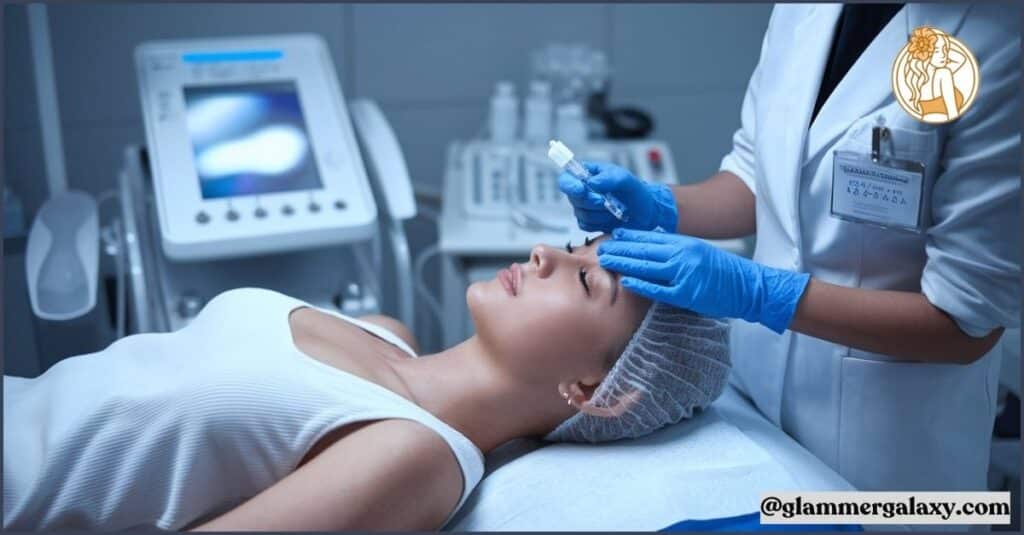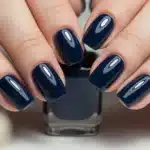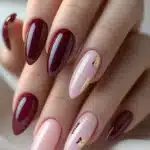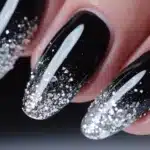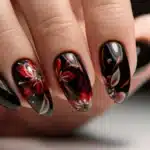One of the most common questions people ask is, “When can I lay down after Botox?” It’s not just about comfort—your position after treatment can significantly impact the effectiveness of the procedure.
In this comprehensive guide, we’ll see the science behind Botox, explore the dos and don’ts of post-treatment care, and provide you with expert advice to ensure you get the most out of your Botox experience.
The Science Behind Botox and Movement
How Botox Affects Muscle Activity
Botox works by blocking nerve signals in the muscles where it’s injected. This prevents the muscle from contracting, which in turn reduces the appearance of wrinkles. But the process isn’t instantaneous—it takes time for the Botox to fully bind to the nerve endings.
“Botox is like a key that locks the door between your nerves and muscles. Once that door is locked, the muscle can’t contract as strongly, leading to smoother skin.” – Dr. Jane Smith, Board-Certified Dermatologist.
At a molecular level, Botox inhibits the release of acetylcholine, a neurotransmitter responsible for muscle contractions. This inhibition leads to a temporary relaxation of the targeted muscles, resulting in the smoothing of wrinkles and fine lines.
The Diffusion Process: Why Position Matters
After injection, Botox molecules start to spread or “diffuse” through the muscle tissue. This diffusion is crucial for the treatment’s effectiveness, but it also means that the position of your face and body can influence where the Botox settles.
Key points about Botox diffusion:
- Typically occurs within the first 4 hours after injection
- Can be affected by gravity and muscle movement
- Proper distribution ensures even results and reduces the risk of side effects
The diffusion process is delicate and can be influenced by various factors, including the injection technique, the concentration of the Botox solution, and the patient’s individual muscle structure. This is why it’s crucial to follow your healthcare provider’s post-treatment instructions carefully.
The Golden Rule: When Can You Lie Down After Botox?
The 4-Hour Minimum Guideline
Most healthcare providers recommend staying upright for at least 4 hours after your Botox treatment. This timeframe allows the Botox to settle into the intended muscles without the risk of migration to unintended areas.
During these crucial hours, the Botox begins to bind to the nerve endings in the targeted muscles. Staying upright helps ensure that gravity doesn’t cause the Botox to shift to other areas, potentially leading to unintended effects.
Factors That May Influence Waiting Time
- Treatment Area: Injections in different facial regions may require varying precautions.
- Dosage: Higher doses might necessitate longer waiting periods.
- Individual Physiology: Your body’s unique characteristics can affect how quickly Botox takes effect.
| Treatment Area | Recommended Upright Time |
| Forehead | 4-6 hours |
| Crow’s Feet | 3-4 hours |
| Frown Lines | 4-6 hours |
| Neck Bands | 6-8 hours |
It’s important to note that these are general guidelines. Your healthcare provider may give you specific instructions based on your individual treatment plan and medical history.
See Also : Red Lip Makeup Looks Vintage to Modern Glam
Risks of Lying Down Too Soon
Botox Migration: What It Means and Why It’s Problematic
Botox migration occurs when the injected toxin moves to unintended muscles. This can lead to unwanted effects, such as droopy eyelids or asymmetrical results.
Potential consequences of premature reclining:
- Uneven results
- Increased risk of side effects
- Reduced effectiveness in target areas
When Botox migrates, it can affect muscles that weren’t intended to be treated. This not only reduces the effectiveness of the treatment in the target area but can also lead to complications. For example, if Botox migrates to the muscles around the eyes, it could cause temporary eyelid drooping or vision changes.
Case Study: The Droopy Eyelid Dilemma
Sarah, a 35-year-old office manager, received Botox for her forehead wrinkles. Eager to relax after her treatment, she lay down for a nap just an hour after the procedure. A week later, she noticed her left eyelid was drooping slightly. Her dermatologist explained that lying down too soon likely caused some Botox to migrate, affecting the muscle that lifts her eyelid.
This case illustrates the importance of following post-treatment instructions. While Sarah’s droopy eyelid was temporary and resolved within a few weeks, it caused her unnecessary worry and discomfort.
Optimal Post-Botox Practices
Immediate Aftercare (0-4 Hours)
1. Gentle Facial Exercises
Performing specific facial movements can help distribute the Botox evenly and potentially enhance its effectiveness.
Try these exercises (repeat 10 times each):
- Raise and lower your eyebrows
- Squint and release
- Smile widely, then relax
These exercises gently contract and relax the treated muscles, which may help the Botox bind more effectively to the nerve endings. However, it’s crucial not to overdo these exercises, as excessive movement could potentially disperse the Botox too much.
2. Ice Application Techniques
Applying ice can help reduce swelling and discomfort. Use an ice pack wrapped in a soft cloth and apply it to the treated areas for 10-15 minutes at a time.
When applying ice, be careful not to press too hard on the injection sites. The goal is to cool the area gently, not to numb it completely. You can repeat this process every hour or as recommended by your healthcare provider.
Extended Care (4-24 Hours)
1. Sleeping Position Recommendations
When it’s finally time to sleep, try to remain on your back with your head slightly elevated. This position minimizes pressure on the treated areas and reduces the risk of Botox migration.
Consider using an extra pillow to keep your head propped up. If you’re a side or stomach sleeper, you might want to surround yourself with pillows to help maintain a back-sleeping position throughout the night.
2. Activities to Avoid
- Strenuous exercise
- Facial massages
- Hot showers or saunas
- Alcohol consumption
These activities can increase blood flow to the face, potentially causing the Botox to spread to unintended areas. They can also increase the risk of bruising and swelling at the injection sites.
Beyond Lying Down: Comprehensive Post-Botox Care
Skincare Dos and Don’ts
Do:
- Gently cleanse your face
- Apply a light, non-irritating moisturizer
- Use sunscreen daily
Don’t:
- Use harsh exfoliants or retinoids for at least 24 hours
- Apply heavy makeup immediately after treatment
- Touch or rub the treated areas excessively
Your skin may be more sensitive after Botox treatment, so it’s important to be gentle. Avoid any skincare products that could irritate the injection sites or cause inflammation. If you’re unsure about a particular product, consult with your healthcare provider.
Makeup Application Guidelines
Wait at least 4 hours before applying makeup. When you do apply it, be gentle and avoid rubbing or pressing too hard on the treated areas.
If possible, use clean makeup brushes or sponges rather than your fingers to apply makeup. This can help reduce the risk of introducing bacteria to the injection sites.
Sun Protection Strategies
UV exposure can break down Botox faster, potentially shortening its effects. Always use a broad-spectrum sunscreen with at least SPF 30, and consider wearing a wide-brimmed hat when outdoors.
Remember to reapply sunscreen every two hours, especially if you’re spending a lot of time outside. UV protection is not just important for your Botox results, but for overall skin health as well.
Exercise and Physical Activity Considerations
While light activities are generally fine after the initial 4-hour period, it’s best to avoid intense workouts for at least 24 hours post-treatment. Excessive sweating and increased blood flow could potentially spread the Botox to unintended areas.
When you do return to your exercise routine, be mindful of activities that involve bending over or lying face-down, as these positions could put pressure on the treated areas.
You might like : 9 Key Nutrients of Vitamins for Lash Growth
Troubleshooting Common Concerns
What If You Accidentally Lay Down?
If you inadvertently recline before the recommended time, don’t panic. Sit up as soon as you realize and try to remain upright for the remaining time. Monitor for any unusual symptoms and contact your provider if you’re concerned.
Remember, a brief moment of reclining is unlikely to cause significant issues. The key is to return to an upright position as soon as possible and to avoid repeating the mistake.
Managing Discomfort and Swelling
Some discomfort and swelling are normal after Botox injections. Here’s how to manage these symptoms:
- Apply cold compresses
- Take over-the-counter pain relievers if needed (avoid aspirin, which can increase bruising)
- Stay hydrated
If you experience severe pain or swelling that doesn’t subside after a day or two, contact your healthcare provider. They may want to examine you to ensure there are no complications.
When to Contact Your Healthcare Provider
Seek medical attention if you experience:
- Severe pain or swelling
- Difficulty breathing or swallowing
- Unusual weakness in any part of your body
- Vision problems
While serious side effects from Botox are rare, it’s important to be vigilant and report any concerning symptoms promptly. Your healthcare provider is the best resource for addressing any complications that may arise.
Maximizing Botox Results: Long-term Care
Follow-up Appointments: Why They Matter
Regular follow-ups allow your provider to assess the results, make any necessary adjustments, and plan future treatments. They’re essential for maintaining consistent results over time.
During these appointments, be honest about your satisfaction with the results and any side effects you may have experienced. This information helps your provider refine your treatment plan for optimal outcomes.
Maintenance Tips for Prolonged Efficacy
- Stay consistent with treatments: Regular Botox sessions (typically every 3-4 months) can help maintain results.
- Practice good skincare: A solid routine can complement your Botox treatments and improve overall skin health.
- Stay hydrated: Proper hydration supports skin elasticity and overall health.
- Manage stress: High stress levels can exacerbate facial muscle tension, potentially shortening Botox effects.
Consider incorporating stress-reduction techniques into your daily routine, such as meditation, yoga, or deep breathing exercises. These practices can help relax facial muscles and may contribute to longer-lasting Botox results.
Debunking Botox Myths
Separating Fact from Fiction in Post-Treatment Care
| Myth | Fact |
| You can’t wash your face after Botox | Gentle cleansing is fine after 4 hours |
| Botox results are immediate | Full effects typically take 7-14 days |
| Botox is only for wrinkles | It has various medical applications too |
| More Botox means better results | Proper dosing is key; more isn’t always better |
| Botox is toxic and dangerous | When administered properly, Botox is safe |
| Botox will make your face expressionless | Skilled injectors can preserve natural expressions |
It’s important to rely on information from reputable sources and to discuss any concerns with your healthcare provider. They can provide accurate, up-to-date information tailored to your specific situation.
Why Personalized Advice Trumps Internet Hearsay
While online resources can provide general information, every individual’s needs are unique. Your healthcare provider can offer tailored advice based on your specific treatment, skin type, and health history.
Factors that may influence your personalized care plan include:
- Your age and overall health
- The specific areas being treated
- Your skin type and condition
- Any medications you’re taking
- Your lifestyle and daily activities
Remember, what works for one person may not be ideal for another. Trust in the expertise of your healthcare provider and don’t hesitate to ask questions about your treatment plan.
Explore this interesting post : Showering After an Ice Bath Myth or Necessity
The Future of Botox: Emerging Trends and Research
As the field of cosmetic treatments continues to evolve, researchers are exploring new applications and techniques for Botox. Some emerging trends include:
- Micro-Botox: This technique involves injecting very small amounts of diluted Botox into the skin rather than the muscles, potentially providing more subtle results.
- Combination Treatments: Practitioners are increasingly combining Botox with other treatments like dermal fillers or laser therapies for more comprehensive rejuvenation.
- Preventative Botox: Younger patients are starting Botox treatments earlier as a preventative measure against wrinkle formation.
- Non-Cosmetic Applications: Botox is being studied for various medical conditions, including migraines, excessive sweating, and even depression.
As research continues, we may see new guidelines for post-treatment care emerge. Always stay informed about the latest developments and discuss any new options with your healthcare provider.
Learn more about this topic from top plastic surgeon in this video
Conclusion: Balancing Caution and Comfort in Your Botox Journey
Botox can be a game-changer for those seeking to reduce the appearance of wrinkles and fine lines. By following proper post-treatment care guidelines, particularly regarding when to lie down after Botox, you can maximize the benefits of your treatment while minimizing potential side effects.
Remember, the key to successful Botox treatment lies not just in the injection itself, but in the care you take afterward. Stay upright for at least 4 hours, follow your provider’s specific instructions, and don’t hesitate to reach out if you have concerns.
With the right approach, you can enjoy smoother, more youthful-looking skin while ensuring the safety and effectiveness of your Botox treatment. Here’s to your journey towards confidence and radiance!
FAQs
Q: Can I nap after Botox if I sleep sitting up? A: While it’s best to avoid sleeping for the first 4 hours, if you must nap, doing so in an upright position is preferable to lying down. However, try to stay awake if possible to ensure the best results.
Q: How soon can I wash my face after treatment? A: Wait at least 4 hours before washing your face, and be gentle when you do. Use lukewarm water and a mild, non-abrasive cleanser. Pat your face dry instead of rubbing.
Q: Is it safe to get a massage after Botox? A: Avoid facial massages for at least 24 hours after treatment. For body massages, wait at least 6 hours and inform your massage therapist about your recent Botox treatment. They should avoid putting pressure on your face or neck area.

Sarah Williams is an experienced blogger and fashion enthusiast at Glammer Galaxy. With a passion for beauty and style, she shares expert insights on hair trends, nail art, and fashion tips. Her creative flair and years of experience make her a go-to source for all things glam!

